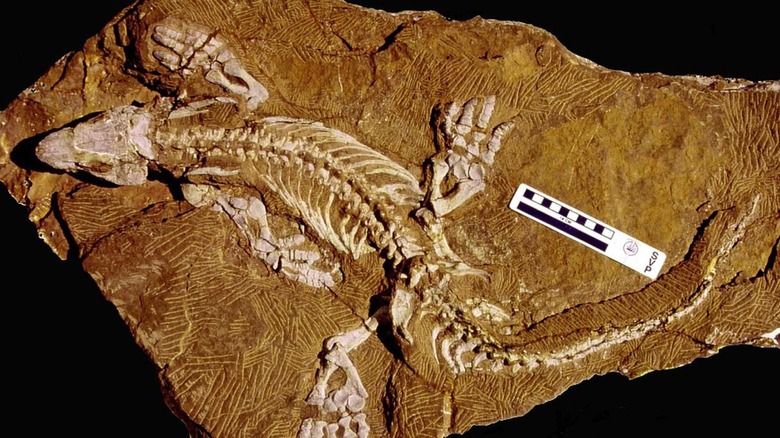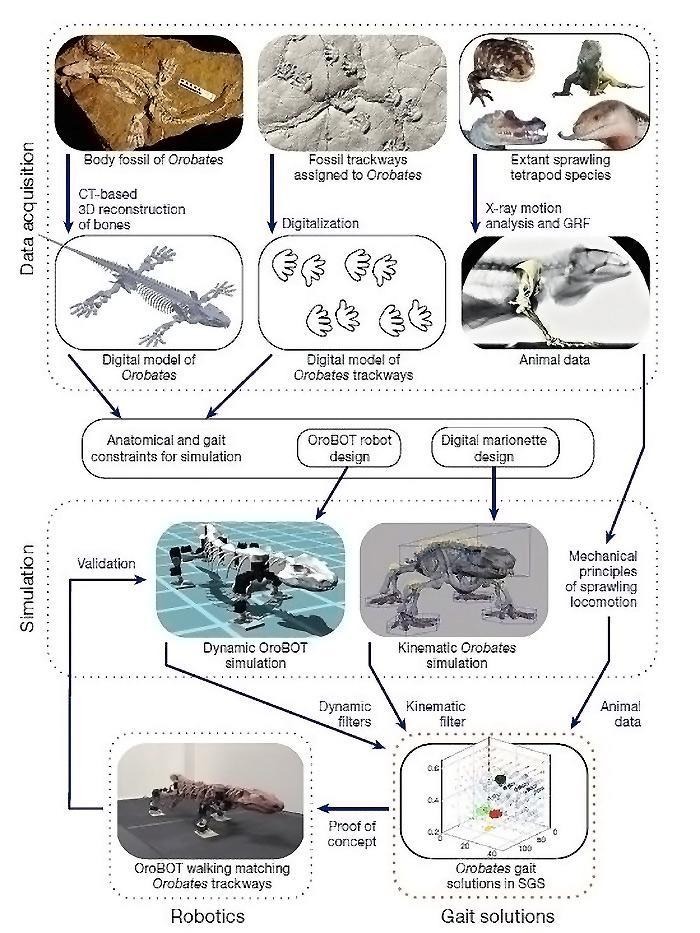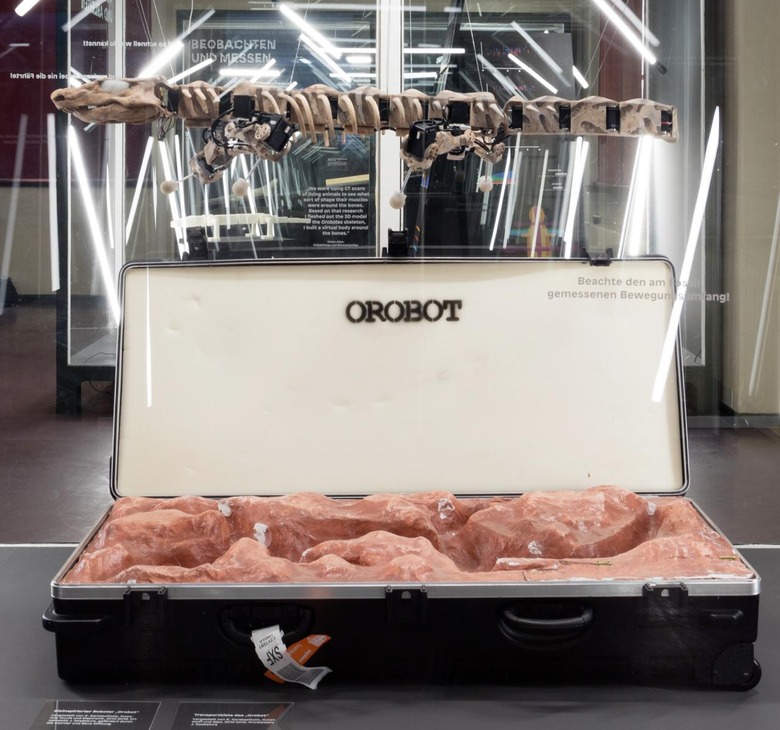Robotics help 290-million-year-old fossil walk again
So you'd like to see a 290-million-year-old creature walk the earth here in the year 2019, would you? You're in luck, because that happened. You're about to see the work of evolutionary biologist John Nyakatura at Humboldt University in Berlin. He teamed up with robotics expert Kamilo Melo at the Swiss Federal Institute of Technology in Lausanne to map and recreate the look of an ancient animal by the name of Orabates pabsti.
The life-size replica of beast was created, bone by bone, and fitted with the necessary electronics to allow its movement to be recreated in real life. The creature isn't brought back to life in full – just its movement. In the end, what the team had was an animatronic reproduction of a Orabates pabsti. The result was what they called "OroBOT."

OroBOT can be seen in the video below, complete with a body made of 3D-printed plastic and steel parts. This model isn't the exact same size of the original – it's sized up a bit to make room for the robotics necessary to make it move accurately with the tech they had on hand for this project.
Above you'll find that OroBOT represents a lively, strong, and certainly agile creature. While the animal may look a bit like a crocodile, it was much more ready to roll in more than one environment.

The team used preserved ancient footprints as one model for the creature's walk. Its gait, its speed, and the angles at which it moved all played a factor in finding the right way to accurately represent the real walk of the creature.
"Our metrics indicate that Orobates exhibited more advanced locomotion than has previously been assumed for earlier tetrapods," said Nyakatura et. all in their research paper published this week in Nature, "which suggests that advanced terrestrial locomotion preceded the diversification of crown amniotes."
To learn more about this subject, take a peek at the scientific journal Nature, where on January 16th, 2019, the paper "Reverse-engineering the locomotion of a stem amniote" was published. This paper was authored by John A. Nyakatura, Kamilo Melo, Tomislav Horvat, Kostas Karakasiliotis, Vivian R. Allen, Amir Andikfar, Emanuel Andrada, Patrick Arnold, Jonas Lauströer, John R. Hutchinson, Martin S. Fischer, and Auke J. Ijspeert. The code DOI 10.1038/s41586-018-0851-2 corresponds with the research and can be used to cite said research through the future.

ALSO: If you'd like to see OrBOT up close and personal, there's a "Orobates. Reanimated after 300 million years" exhibition going on right now! This exhibition is on display until February 5th 2017 at the Tieranatomisches Theater in central Berlin.
